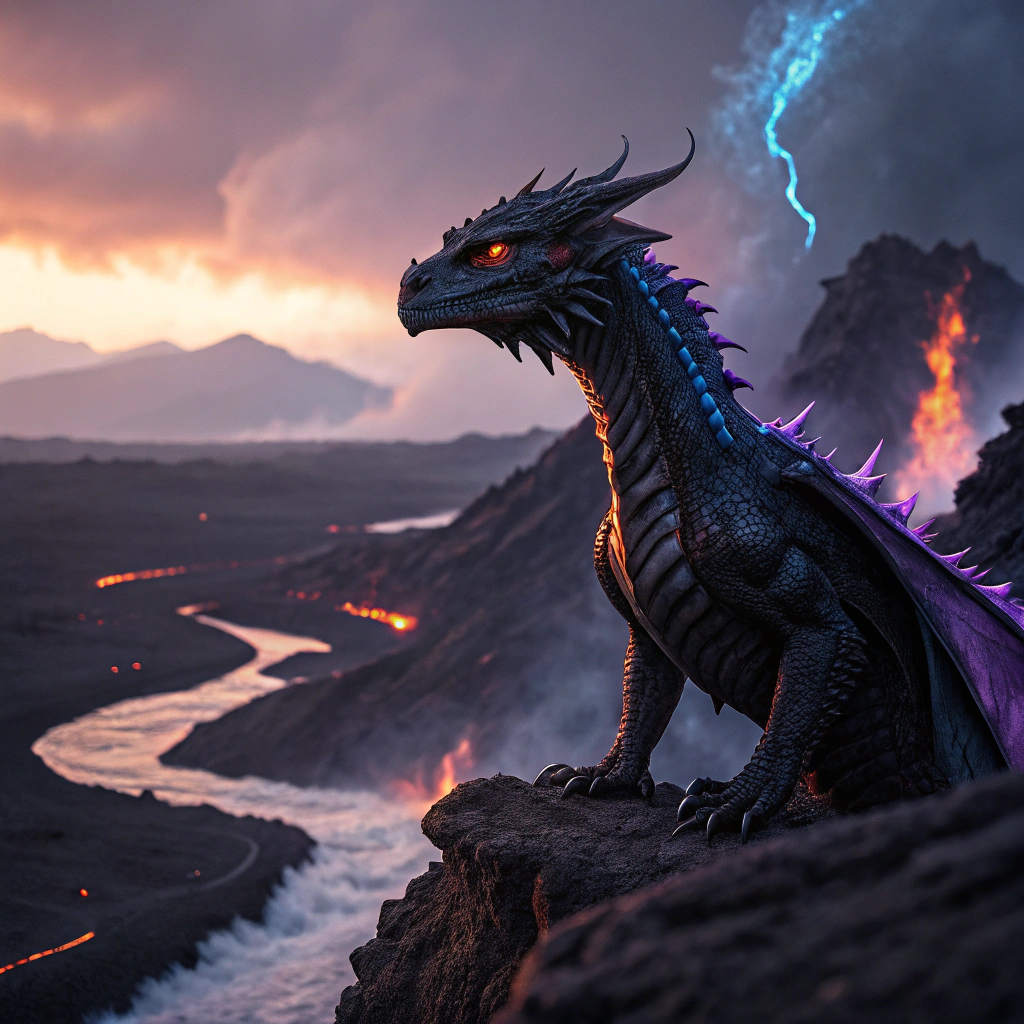
Obsidian Dragon Name Generator
Name: Noxus
Meaning Origin Description Night Stone Latin A dragon whose scales reflect the depth of midnightName: Obsidius
Meaning Origin Description Of Obsidian Latin Master of volcanic glass and shadowName: Xiuhcoatl
Meaning Origin Description Turquoise Serpent Aztec Fire serpent associated with volcanic glassName: Tezcatlipoca
Meaning Origin Description Smoking Mirror Aztec Named after the deity associated with obsidianName: Mauroth
Meaning Origin Description Dark Glass Celtic Guardian of ancient volcanic secretsObsidian Dragon Details
| Habitat | Volcanic regions and ash wastes |
| Breath weapon | Line of volcanic glass shards |
| Usual alignment | Neutral Evil |
The Obsidian Dragon represents a remarkable species characterized by its distinctive volcanic glass-like scales, which exhibit a deep black coloration with occasional iridescent sheens. These creatures typically reach lengths of 40-60 feet at maturity, with wingspans extending up to 80 feet.
Their habitat primarily consists of volcanic regions, particularly dormant calderas and extensive lava fields. They demonstrate remarkable heat resistance, capable of withstanding temperatures exceeding 1000°C. Their scales, composed of a unique biological composition similar to natural obsidian but with enhanced flexibility, provide excellent protection against both physical and magical attacks.
These dragons display exceptional intelligence and tend toward lawful evil alignments, often establishing complex hierarchical societies within their territories. They possess innate magical abilities, particularly those related to earth and fire manipulation. Their breath weapon manifests as a combination of superheated air and razor-sharp obsidian shards, capable of both burning and lacerating targets.
Obsidian Dragons maintain strict territorial boundaries and often create elaborate underground lairs within volcanic systems. They're known to collect rare minerals and gems, showing particular interest in naturally formed obsidian and other volcanic materials. Their diet consists primarily of large prey, which they often cook using their internal heat before consumption.
Regarding reproduction, they lay clutches of 2-4 eggs every century, with eggs requiring intense heat for successful incubation. Young specimens display more aggressive territorial behavior than adults, who tend to be calculating and methodical in their actions.
Their social structure is highly organized, with clear dominance hierarchies based on age, size, and magical prowess. They rarely form alliances with other species but may enter into temporary agreements when beneficial to their interests.
In combat, they demonstrate strategic thinking, often using their environment to their advantage and employing their natural camouflage abilities in volcanic terrains. Their scales provide natural armor class protection while also allowing them to blend seamlessly with obsidian formations.
Notable physiological features include:
- Heat-sensing organs along their snouts
- Reinforced wing membranes resistant to volcanic gases
- Multiple layers of crystalline scales
- Enhanced night vision
- Ability to detect precious metals and gems within their territory
Their presence in an ecosystem typically indicates significant volcanic activity, and they play a crucial role in maintaining the balance of magical energies in these regions, though often to their own advantage rather than for the benefit of other species.